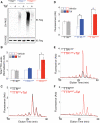Endoplasmic Reticulum Proteostasis Influences the Oligomeric State of an Amyloidogenic Protein Secreted from Mammalian Cells
- PMID: 27720586
- PMCID: PMC5108364
- DOI: 10.1016/j.chembiol.2016.09.001
Endoplasmic Reticulum Proteostasis Influences the Oligomeric State of an Amyloidogenic Protein Secreted from Mammalian Cells
Abstract
Transthyretin (TTR) is a tetrameric serum protein associated with multiple systemic amyloid diseases. In these disorders, TTR aggregates in extracellular environments through a mechanism involving rate-limiting dissociation of the tetramer to monomers, which then misfold and aggregate into soluble oligomers and amyloid fibrils that induce toxicity in distal tissues. Using an assay established herein, we show that highly destabilized, aggregation-prone TTR variants are secreted as both native tetramers and non-native conformations that accumulate as high-molecular-weight oligomers. Pharmacologic chaperones that promote endoplasmic reticulum (ER) proteostasis of destabilized TTR variants increase their fraction secreted as a tetramer and reduce extracellular aggregate populations. In contrast, disrupting ER proteostasis reduces the fraction of destabilized TTR secreted as a tetramer and increases extracellular aggregates. These results identify ER proteostasis as a factor that can affect conformational integrity and thus toxic aggregation of secreted amyloidogenic proteins associated with the pathology of protein aggregation diseases.
Keywords: ER stress; Transthyretin; amyloid; extracellular proteostasis; misfolded protein secretion; protein aggregation; protein secretion.
Copyright © 2016 Elsevier Ltd. All rights reserved.
Figures






References
MeSH terms
Substances
Grants and funding
LinkOut - more resources
Full Text Sources
Other Literature Sources
Research Materials
Miscellaneous

